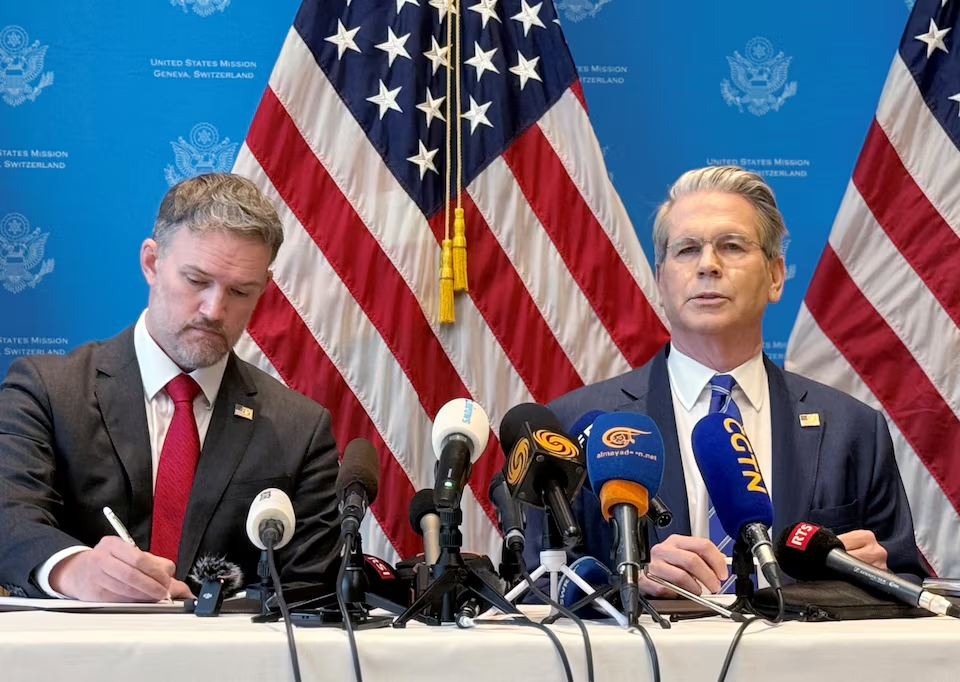Now Reading: U.S. and China Reach Landmark Tariff Deal, Boosting Global Markets and Lifting Dollar
-
01
U.S. and China Reach Landmark Tariff Deal, Boosting Global Markets and Lifting Dollar
U.S. and China Reach Landmark Tariff Deal, Boosting Global Markets and Lifting Dollar

In a major development that could reshape the global economic landscape, the United States and China have reached a breakthrough agreement to reduce tariffs on hundreds of billions of dollars’ worth of traded goods. This long-anticipated deal marks a significant de-escalation of the trade tensions that have defined global economic relations for the past several years.
Key Points of the Deal:
- The U.S. will reduce tariffs on approximately $200 billion worth of Chinese imports.
- China has agreed to cut tariffs on key American exports, including agricultural goods and industrial equipment.
- Both nations have committed to renewed transparency and monitoring mechanisms.
- The deal comes after months of intense behind-the-scenes negotiations and pressure from global financial institutions.
📈 Impact on Currency Markets:
Following the announcement, the U.S. dollar surged, gaining strength against a basket of major currencies. Forex traders saw a notable spike in USD/JPY and USD/EUR trading pairs, reflecting increased investor confidence in the U.S. economy.
Economists say this could mark the beginning of a new era in U.S.-China trade, one that’s less combative and more cooperative—at least for now.
“This is a pivotal moment,” said Sarah Liu, an economist at the Institute for Global Trade. “Investors had priced in prolonged tensions, and now the market is adjusting rapidly.”
🌍 Global Market Reactions:
- Wall Street saw immediate gains, with the S&P 500 rising 1.8% and the Dow Jones Industrial Average closing over 400 points higher.
- Asian markets responded positively, with the Hang Seng Index climbing 2.1%.
- European exchanges, including the FTSE 100 and DAX, recorded moderate gains fueled by optimism around reduced trade uncertainty.
🚜 Agriculture and Manufacturing to Benefit:
U.S. soybean and corn exporters are expected to benefit immediately from reduced Chinese import tariffs. Additionally, American manufacturers of machinery and electronics may find renewed access to Chinese markets.
For China, the deal promises relief for tech exporters and reduced costs on crucial industrial imports.
💬 Political and Economic Analysis:
While both countries have framed the deal as a “win-win,” some analysts urge caution. They argue the agreement might be fragile and heavily reliant on compliance from both sides.
Critics within the U.S. argue that certain structural issues—such as intellectual property protections—remain unaddressed. In China, some voices are wary of becoming too economically dependent on American exports.
Nonetheless, both governments are portraying the agreement as a diplomatic victory.
🔮 What Comes Next?
Economists suggest that while this agreement calms the waters for now, it’s unlikely to be the final chapter in U.S.-China economic relations.
Further negotiations may follow, especially concerning digital trade, technology transfer, and cybersecurity cooperation. However, for now, global businesses can breathe a sigh of relief.
📊 Conclusion:
This deal offers hope to businesses, consumers, and investors around the world. As tariffs are lifted and trade normalizes, the impact on global supply chains, inflation, and economic growth will unfold over the coming months.
The strengthening of the dollar signals confidence—but also raises questions about how long this momentum can last.
Stay tuned for updates as this story continues to develop.






















